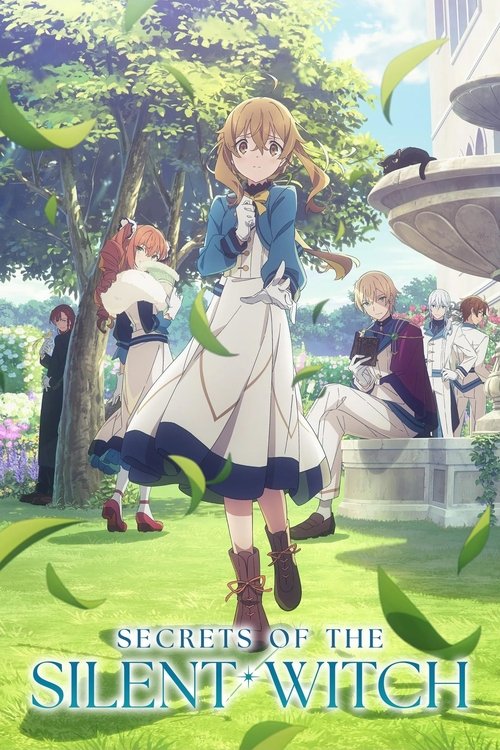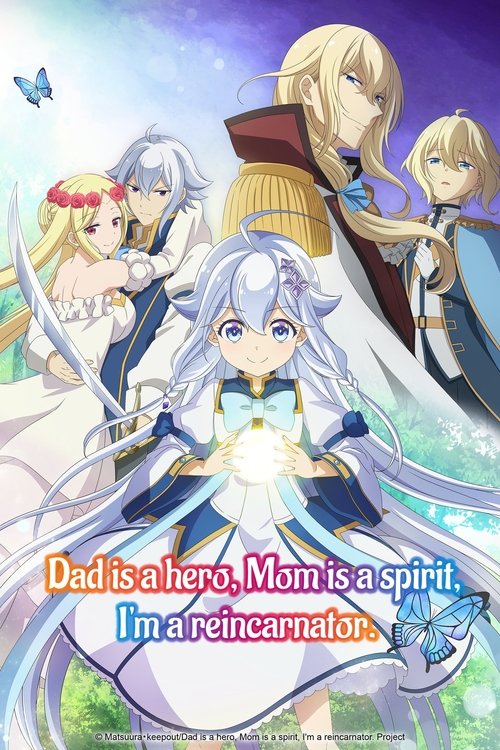
Ask Your Own Question
What is the plot?
The story begins with Lilisa Suzunomiya, a young blonde teenager who has recently become the daughter of a wealthy real estate tycoon after her mother remarried. To fit into her new life at an elite all-girls school, where ladylike behavior is strictly enforced, Lilisa abandons her beloved guitar and her passion for rock music, adopting a refined and polished persona to match her affluent surroundings.
Early in the series, Lilisa struggles with the pressure to maintain this facade, feeling trapped by the expectations of her new social status and the restrictive gender roles imposed at her school. She is depicted as working hard to perfect her "lady" act, which includes adopting a prim appearance and suppressing her true self. This internal conflict is highlighted through flashbacks to her life before her mother's remarriage, showing a freer, more authentic Lilisa who loved rock music and playing guitar.
The turning point occurs when Lilisa meets Otoha Kurogane, a seemingly perfect and prim classmate with black hair. Otoha initially presents herself as the ideal ladylike student, but Lilisa soon discovers that Otoha secretly plays heavy metal drums in a hidden jam room. This revelation shocks Lilisa and ignites a spark within her, rekindling her passion for rock music.
Lilisa and Otoha begin to bond over their shared love of music, despite the strict social codes of their school. Their relationship is marked by intense competitiveness and frequent shouting matches filled with over-the-top vulgarities, which contrast sharply with the school's refined atmosphere. This dynamic serves as a form of rebellion against the performative femininity expected of them.
As their friendship deepens, Lilisa and Otoha form a band together, embracing their true selves through music. They recruit other members, including Tamaki and Tina, who become permanent parts of the band. The band practices in secret, using the hidden jam room as their sanctuary from the pressures of school life.
Throughout the series, the girls face various challenges, including confrontations with school authorities who disapprove of their rebellious behavior and musical pursuits. These confrontations often involve heated arguments and tense moments where the girls must defend their right to express themselves freely.
One significant sequence involves Lilisa and Otoha escaping from a school event where they are about to be reprimanded for their loud and unruly behavior. They sneak away to the jam room, where they channel their frustration into an intense musical session, solidifying their bond and commitment to their band.
The series also explores homoerotic subtext and BDSM imagery, which are woven into the characters' interactions and the rock and roll aesthetic of the show. These elements serve to parody and push the boundaries of the genre, adding layers of complexity to the characters' relationships.
In the final episodes, the band faces a major performance opportunity that could expose them to the entire school. Despite the risks, Lilisa, Otoha, Tamaki, and Tina decide to perform, fully embracing their identities as rock musicians rather than conforming to the ladylike image imposed on them.
The climax features a powerful live performance where the girls unleash their energy and passion, breaking free from the metaphorical cages of societal expectations. The performance is raw and intense, with detailed scenes showing each member's instrumental prowess and emotional investment.
The series concludes with Lilisa and Otoha solidifying their partnership, both musically and personally, as they commit to continuing their journey together. The final scenes show the band members united, having destroyed the bars that once caged them, ready to face the future on their own terms.
More TV Shows Like This
Browse All TV Shows →
What is the ending?
The ending of "Rock Is a Lady's Modesty" culminates in the band's final battle of the bands performance against their rival, Bitter Ganache. Tina, initially doubted and almost removed from the band, proves her growth and skill after intense coaching and practice. The band delivers a powerful performance that reflects their true selves, with each member embracing their individuality. The story closes with the band united, having overcome internal conflicts and external challenges, while each main character finds resolution in their personal and musical journeys.
Expanding on the ending scene by scene:
The final episode opens with tension as Tamaki, the band leader, argues that Tina's removal would improve their chances against Bitter Ganache. Tina herself contemplates leaving the band, feeling inadequate. However, Lilisa, the band's vocalist, firmly rejects Tamaki's demand, insisting that the band must express their true selves rather than conform to a winning formula. She demands more time to coach Tina, which Tamaki reluctantly agrees to.
On their way home, Otoha, another band member, teases Tamaki by pointing out how Tamaki's early passion for rock music mirrors Tina's current struggles. This moment subtly highlights the theme of growth and mentorship within the band.
Five days later, the band reconvenes for practice. Tina's skills have noticeably improved, impressing Tamaki, though she remains skeptical about Tina's readiness. Otoha reveals she has also been helping Tina train, which persuades Tamaki to finally give Tina a chance to perform.
The day of the battle of the bands arrives. The girls enter the venue and immediately face Bitter Ganache, their rival band. They discover that much of the audience is there primarily to see Tamaki perform, which sparks jealousy in Lilisa. Determined to outshine Tamaki, Lilisa vows to deliver a performance that surpasses hers.
The band takes the stage and performs with renewed energy and authenticity. Their music reflects their individual strengths and collective unity, showcasing Tina's growth and the band's cohesion. The performance is met with enthusiasm, symbolizing their triumph over personal doubts and external pressures.
In the closing moments, the fate of the main characters is clear:
-
Tina solidifies her place in the band, having overcome her insecurities and earned the respect of her bandmates.
-
Tamaki accepts the importance of nurturing each member's individuality rather than enforcing rigid standards.
-
Lilisa embraces her role as a passionate leader who values authenticity over competition.
-
Otoha continues to support and encourage the band, embodying camaraderie.
The series ends on a hopeful note, with the band united and ready to face future challenges together, having grown both as musicians and as individuals.
Is there a post-credit scene?
The TV show Rock Is a Lady's Modesty (2025) does not have a post-credits scene. The available detailed episode reviews and summaries, including the finale (episode 13), do not mention any post-credit content or additional scenes after the main ending. The focus is on the final concert and the intimate conversation between Lilisa and Otoha after the show, which serves as the emotional and thematic conclusion of the series.
Additionally, no official sources or fan reports indicate the presence of a post-credits scene, and the typical practice for this anime does not include such scenes, unlike some other franchises. The final episode ends with the resolution of the band's dynamics and their personal growth, with no extra footage following the credits.
Therefore, viewers can consider the story complete at the end of the final episode without needing to wait for any post-credit content.
What triggers Lilisa Suzunomiya to rekindle her passion for rock music after abandoning her guitar?
Lilisa Suzunomiya's passion for rock music is reignited when she meets Otoha Kurogane, a highly skilled drummer at her all-girls' school, and they play together in a rock session, which reminds her of her love for guitar and rock music despite having abandoned it after her mother's remarriage into a wealthy family.
How do Lilisa and Otoha decide on the direction and mission of their band?
After their rock session, Lilisa and Otoha meet to determine their band's direction, mission, and rules. They decide to form an instrumental rock band with the goal of performing at the Fuji Rock Festival. Lilisa insists on avoiding hurling abuse at each other during practice to maintain focus on her mission to become the Noble Maiden, although they quickly break this rule and bicker after sessions.
What internal conflict does Lilisa experience regarding her identity and hobbies?
Lilisa struggles with having to give up her guitar and other 'low class' hobbies to fit into the luxurious lifestyle of the Suzunomiya family after her mother's remarriage. This internal conflict is highlighted during her rock sessions with Otoha, where her passion for music clashes with the expectations placed on her to act like a refined young lady.
How does Alice's perception of Lilisa affect the story?
Alice, a classmate who reveres Lilisa publicly, actually harbors hidden contempt for her, perceiving Lilisa as an intruder into the Suzunomiya family. This tension adds a layer of interpersonal conflict within the school setting, influencing character dynamics and Lilisa's social challenges.
What role does the all-girls' school setting play in the development of the story and characters?
The elite all-girls' school, where young, ladylike girls from across the country gather, serves as the backdrop for the story. It emphasizes the contrast between Lilisa's rock music passion and the refined, high-society expectations she must navigate. The school environment intensifies the themes of identity, social class, and rebellion through music, shaping the characters' interactions and growth.
Is this family friendly?
The TV show Rock Is a Lady's Modesty (2025) is rated TV-14, indicating it is generally suitable for viewers aged 14 and older but may contain material inappropriate for younger children.
Potentially objectionable or upsetting aspects for children or sensitive viewers include:
-
Sexual content: The series has been described as "sexually drenched," suggesting frequent or explicit sexual themes or scenes that may be unsuitable for younger audiences or those sensitive to sexual content.
-
Mature themes: The story involves social class conflict, family dynamics, and pressures on young girls to conform to elite societal expectations, which may include emotional tension and psychological stress.
-
Mild language and bickering: Characters engage in occasional bickering and use of mild abusive language during band practice, which might be unsettling for very young or sensitive viewers.
-
Complex emotional situations: The protagonist struggles with identity, passion, and social acceptance, which may involve scenes of emotional distress or conflict.
There is no indication of extreme violence or graphic content, but the combination of sexual themes and mature social issues suggests the show is not family-friendly for young children and is better suited for teenagers and adults comfortable with such content.

























